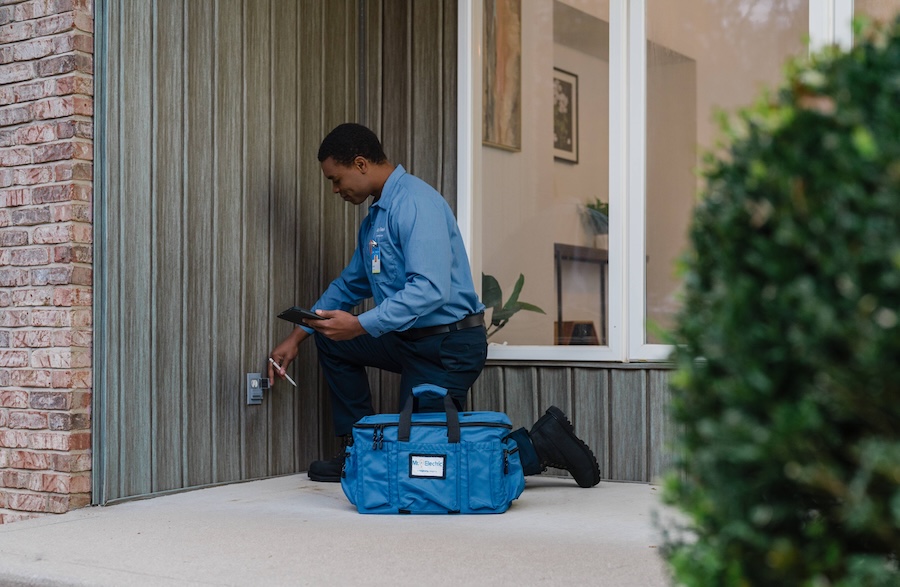Emergency Certified Electricians in Dallas, TX.
Call this Monday to Get 10% OFF
Emergency Certified Electricians in Dallas, TX.
Call this Monday to Get 10% OFF

Electrical outlets can stop working due to loose wiring, internal damage, a broken circuit, normal wear and tear, and other causes. A faulty outlet is not only inconvenient, but it can also lead to safety risks and safety hazards. As a homeowner or business owner, it’s important to know what to do if an outlet stops working so that you can avoid bigger problems down the line, such as electrical fires, damaged appliances, or power disruptions.
In this guide, Mr. Electric explains what to do when an electrical outlet stops working. If you’re dealing with faulty electrical outlets, you’ve come to the right place. Our licensed electricians have decades of experience repairing and replacing different types of electrical outlets, including standard outlets, GFCI outlets, smart outlets, and more.
The first thing to do when an outlet isn’t working is to check your electrical panel. A tripped breaker is one of the most common reasons for a dead outlet. Look for any switches in the “off” position or sitting in between “on” and “off.” If you find one, flip it fully off and then back on. After resetting the breaker, test the outlet again to see if power is restored.
Many modern homes and businesses have Ground Fault Circuit Interrupter (GFCI) outlets, especially in kitchens, bathrooms, garages, and outdoor areas. These safety outlets shut off power when they detect a ground fault or moisture, and one tripped GFCI can affect multiple outlets on the same circuit. Check nearby GFCI outlets for a tripped condition and press the “Reset” button if needed. If the outlet still doesn’t work, or if it trips again immediately, there may be a more serious issue to investigate. Reach out to a licensed electrical service for an inspection.
Try plugging a different device into the outlet. If it works, the problem may be with the original appliance. If not, examine the outlet for signs of wear or damage. Look for scorch marks, a burning smell, loose connections, or if the outlet feels warm to the touch. These are red flags indicating internal damage or overheating, and the outlet should not be used until a licensed electrician can evaluate it.
Over time, outlets can become loose or develop poor connections inside the wall. If the outlet wiggles or doesn’t hold plugs securely, it may be worn out or improperly mounted. While a loose cover plate is a simple DIY fix, wiring issues should always be handled by a professional electrical service. Tampering with live wires or improper repairs can lead to electrical shock or fire.
If you’ve gone through the basic checks and the outlet still isn’t working, it’s time to call a licensed electrician. Problems such as damaged wiring, internal arcing, or faulty circuits require professional diagnosis and repair. Ignoring outlet issues or attempting DIY fixes without the right knowledge can put your property and safety at risk.
Mr. Electric is here to help you with electrical outlet repair and replacement. While there are some problems you can address on your own, it’s advisable to leave electrical work to qualified electricians. For decades, we have provided reliable electrical repair services to both residential and commercial clients. Our electricians have the expertise and experience to address a wide range of electrical outlet issues, including sparking, warm outlets, dead outlets, burn marks, worn internal contacts, unusual sounds coming from outlets, and many more.